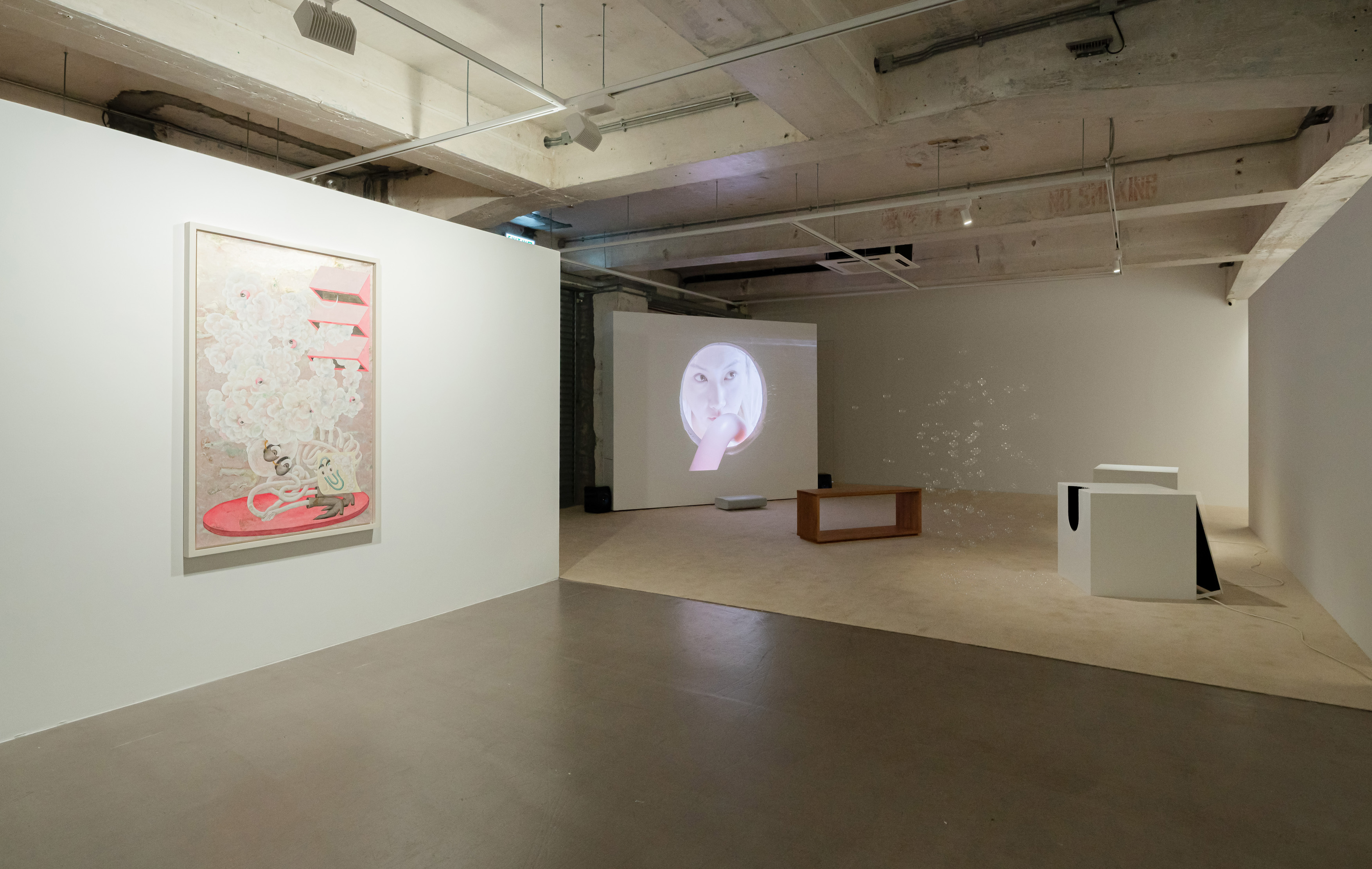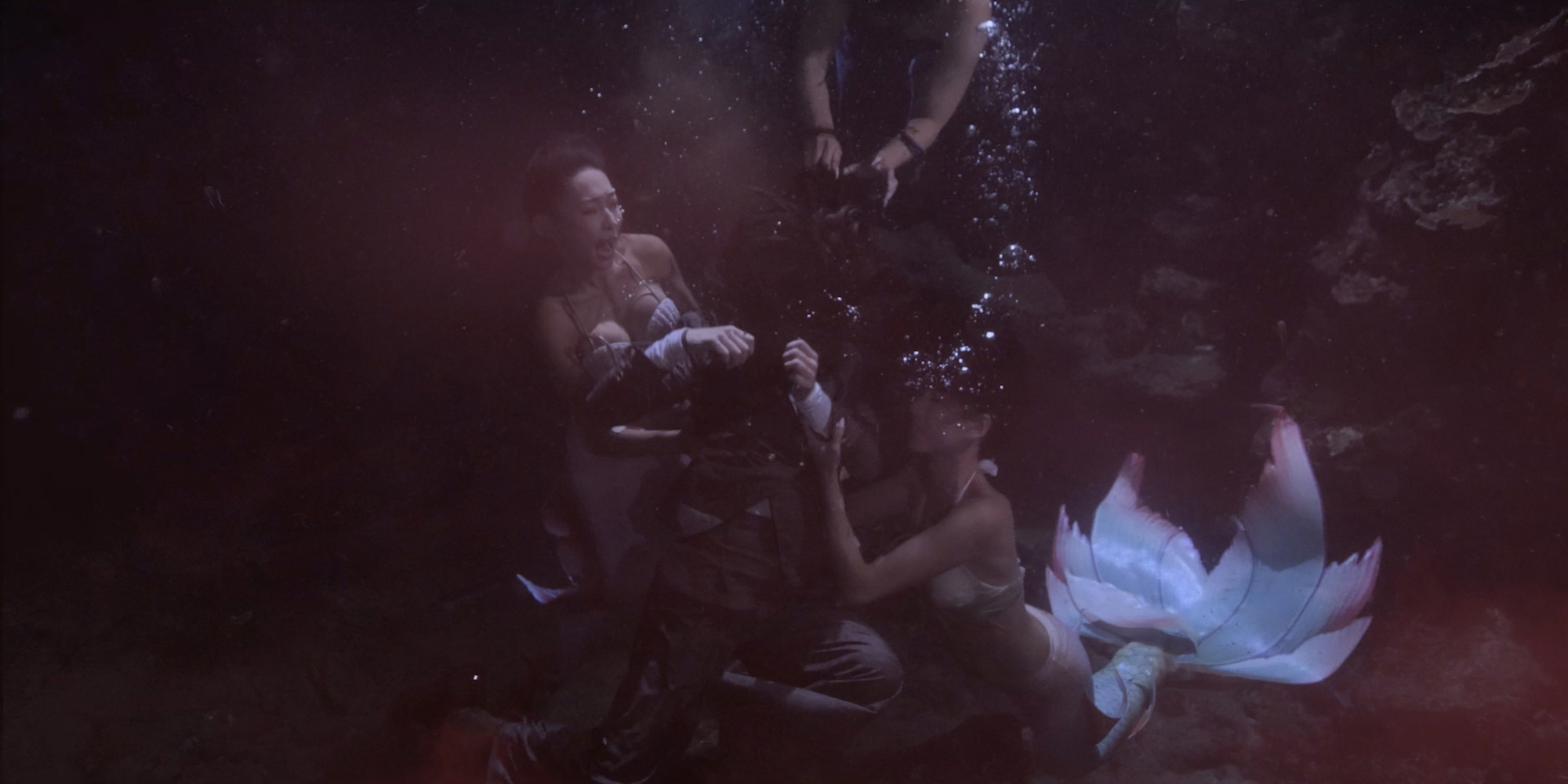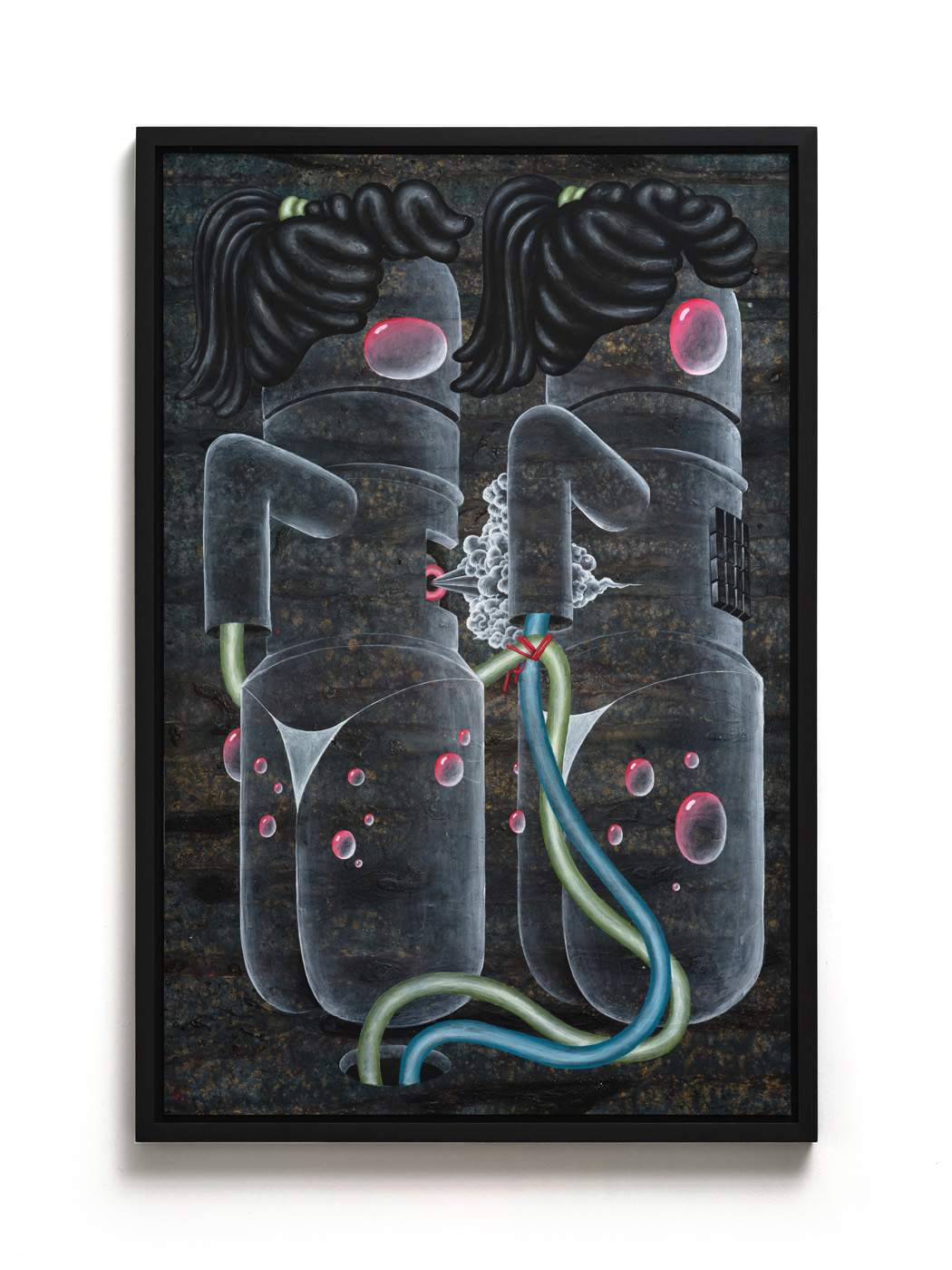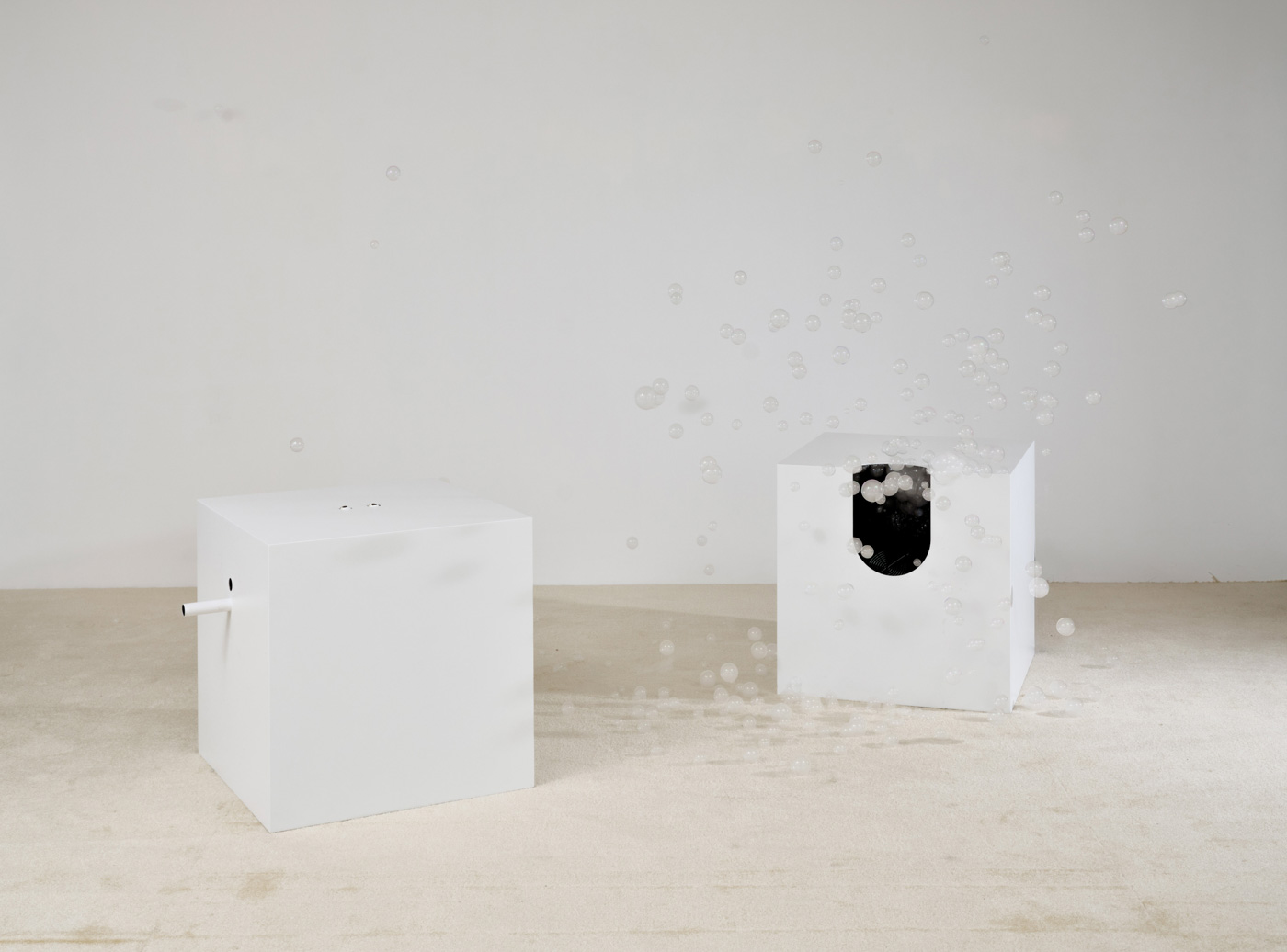Shows
Nebulous Fantasies in Jen Liu’s “I Am Cloud”

Jen Liu
I Am Cloud
Blindspot Gallery
Hong Kong
Sep 17–Nov 2, 2024
From utopian visions of technological progress to bleak predictions of an AI takeover, artificial intelligence has been a recurring theme in various works of science fiction. While compelling, these narratives often tend to focus on the illusory premise of AI becoming sentient, self-aware, and independent of human control—a concern that, paradoxically, upholds promises from tech companies that AI could soon replace human labor altogether.
But when it comes to technophobic discourse, mutinous mechanoids might be the least of our worries. As Taiwanese American artist Jen Liu examined in “I Am Cloud,” her debut solo exhibition at Hong Kong’s Blindspot Gallery, the danger lies not in AI rebellion, but in our fantasy that AI will liberate humankind through fully automated work. Referencing the Cloud—a cyber-infrastructure that stores our memories and data through seemingly remote servers that are in fact powered by an unseen network of humans—the exhibition featured recent and new videos, paintings, and mixed-media animatronics, speculating on the myth of virtualized labor through a postcolonial feminist lens.
Screened in a blacked-out section of the gallery was The Land at the Bottom of the Sea (2023), a half-hour-long film concluding Liu’s Pink Slime Caesar Shift series (2016–23) about the exploitation of female factory workers in South China. In this final chapter, Liu explores techno-optimism and its failure to address tangible environmental and social issues, through a partly AI-generated account of an office worker (played by an actress) “liquidated” by her company. The dramatic cinematography features 3D animations of a woman working in an underwater data center, interpolated with live-action sequences of the office worker as she drifts deeper into the sea. Upon reaching the ocean floor, she encounters mermaids who viciously tear her apart, devouring her severed limbs with ruthless delight. The scene was shocking and violent, intensified by the aftermath of the office worker, mutilated and enveloped in clouds of blood, disappearing into the oceanic void as a solemn female voice narrates the “liquidation” of her employment, which in this context is equated with financial, social, and political erasure. By fusing AI-generated visuals, text, and audio with live-action scenes, Liu points to the human touch concealed within the digital creation process, and how workers are commodified and subjected to violence beneath the gleaming artifice of technology.

JEN LIU, The Land at the Bottom of the Sea, 2023, 4K single-channel video, 27 min 30 sec. Courtesy the artist and Blindspot Gallery, Hong Kong.

JEN LIU, What a Street-Walking Broad: All Dolled Up Like a Charming Young Lass, 2024, acrylic ink, handmade mica-based acrylic paint, acrylic gouache, pulverized e-waste, and gesso on paper, 130 × 84 cm. Courtesy the artist and Blindspot Gallery, Hong Kong.
After the gorefest in The Land at the Bottom of the Sea, Liu’s cartoon-style canvases in the adjoining, brighter space—all of which were made from finely pulverized electronic waste on handmade paper—appeared jarring at first. What a Street-Walking Broad: All Dolled Up Like a Charming Young Lass (2024), for instance, depicts humanoid server clusters and underwater data pods wearing skimpy thongs and high ponytails. Though comical in tone, the anthropomorphs represent human “microworkers” beneath the automated facade who perform small online tasks, often inputting data for machine learning algorithms. Although they form the basis of AI, they are underpaid, unseen, and, to all appearances, non-existent, like a hidden army of “ghost workers,” to quote the anthropologist Mary L. Gray and computer scientist Siddharth Suri. Using feminized motifs (stilettos, manicured nails, thongs), Liu implicitly connects the microworkers’ invisible plight to 19th-century Chinese migrant sex workers, most of whom were trafficked into the United States during the California Gold Rush and confined to tiny brothel rooms, kept out of sight as a way to bypass exclusionary laws and avoid deportation. This historical reference pervaded the paintings, juxtaposing with their playful aesthetic and drawing grim parallels between digital capitalism and the shadow world of prostitution.
This subject was further explored in I Am Cloud (2024), a short video about a female microworker whose character is based on Amazon’s Mechanical Turk (MTurk), the world’s first crowdsourcing digital marketplace; the Xenobot, a living robot made of organic cells; and the Chinese migrant sex worker. By design, the three figures represent our desire to separate the concept of labor from human consciousness, to bury the uncomfortable knowledge that consumer convenience relies on a simultaneously essential yet expendable workforce. Imagining the future of microworkers in an AI-driven economy, the film depicts a platinum-blonde Asian woman performing a slew of mundane data tasks from within an enclosed, white space. Boxed in with barely any room to move, she dutifully carries out her never-ending, repetitive work, taking short breaks to nibble on an energy bar. The scene is claustrophobic, forcing viewers to look past the digital smokescreen at the reality of virtualized labor in which humans are rendered imperceptible, reduced to abstract, mechanical bodies wired only for productivity.

JEN LIU, I Am Cloud, 2024, 4K single-channel video, 15 min. Courtesy the artist and Blindspot Gallery, Hong Kong.

JEN LIU, Describe a Product Based on an Image: A Hyper Fantasy that Celebrates Speed While Being Haunted by the Anxiety of Not Being There (bubble machine), 2024, mixed-media and animatronic sculpture, 66 × 66 × 66 cm. Courtesy the artist and Blindspot Gallery, Hong Kong.
Accompanying the film were two animatronic sculptures resembling white steel cubes. One ejects bubbles while the other, Describe a Product Based on an Image: A Versatile Soft Body Living Machine with Practical Applications Hidden Inside an Algorithmic Fantasy (2024), bears a set of blinking eyes. The eyeballs dart around, occasionally fixating on the viewer with a split-second glint of Hegelian recognition, before averting their gaze again. This optical quirk animates the sculpture and resembles the MTurk, a “chess-playing automaton” from the 18th century that was in fact operated by someone inside the box (after which Amazon’s crowdworkers are named). By referencing this fraudulent machine and incorporating humanlike features, Liu highlighted the fallacy of a self-running digital system, challenging us to acknowledge the human traces embedded within it.
As AI continues to evolve and encroach on our daily lives (even being offered to us as the ultimate cure to socioeconomic exploitation, an absurd form of “capitalist realism”), Liu’s “I Am Cloud” underscored how technology creates new problems while failing to solve current ones. Her AI-infused artworks—a commingling of capitalist fantasy and its obverse reality—encouraged us to look beyond the shiny veneer of automation, to demystify our vaporous conception of AI, and to confront the invisible human hands toiling away in the Cloud.







